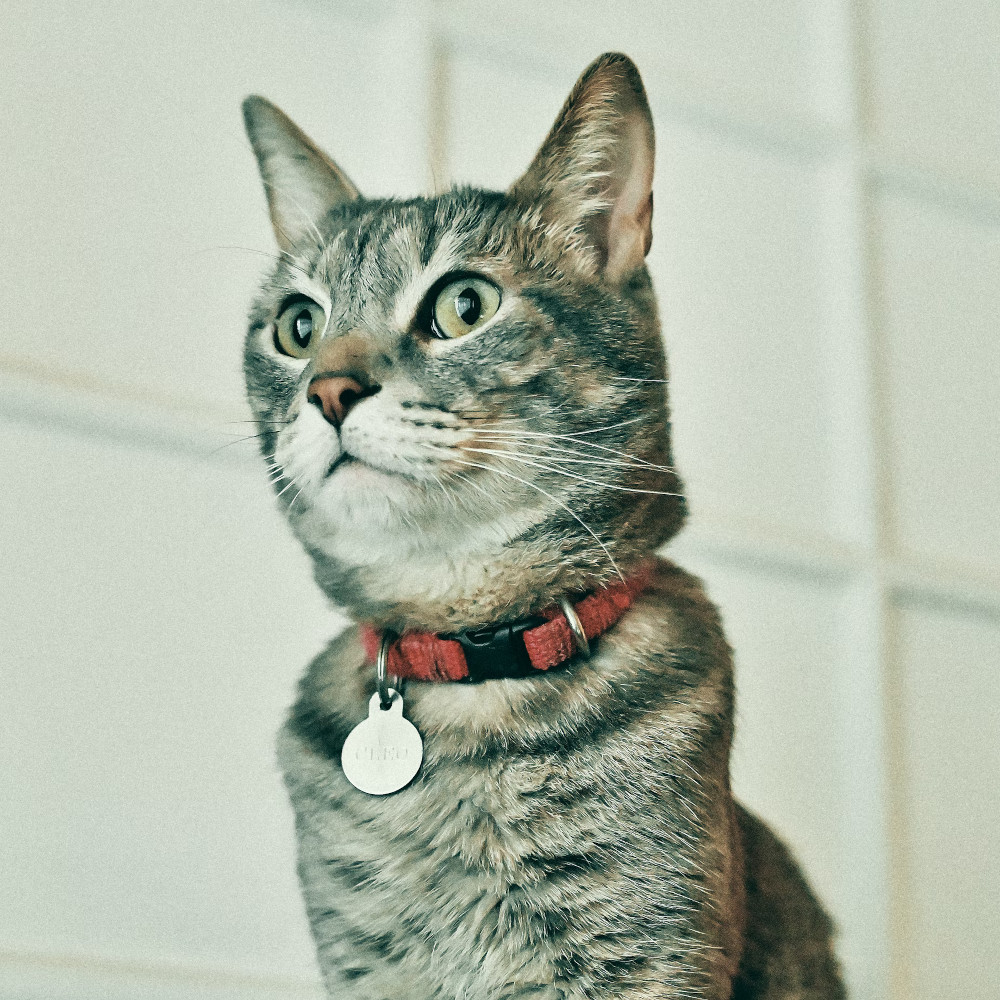To balance your cat’s safety with providing easy identification, a collar with a breakaway clip and ID tag is recommended. This type of collar will snap open if snagged on an object, lowering the risk of your cat getting stuck or injured due to the collar.

Collar considerations
The main purpose of a collar is so that your cat can be identified as a companion animal if they are lost or unwell. This way they can be returned to your care as soon as possible. Another use is to add coloured material or bells to the collar to warn wildlife when your cat is close by and so minimise the chance that your cat might harm wildlife.
The encircling shape of collars means that cats can catch their legs and teeth in the collar, or the collar can get stuck on objects that the cat passes [1]. For this reason, we recommend the use of collars with a quick-release breakaway clip that will open when pulled with force. We advise against non-stretch collars with fixed buckles or stretch collars that can lose their elasticity as they age.
Collar injuries are rare, but can be serious, and are usually linked to the collar being too loose or too tight [1]. Using a quick-release collar minimises this danger. You should be able to fit one large or two small fingers between the collar and hair. Check the condition and fit of your pet’s collar weekly.
Ensure your cat’s collar has some identification to make it quick and easy for you to be contacted and reunited with your cat, if necessary. Include your cat’s name and one or two phone numbers; be sure to update the tag if these details change. Options range from cheap engraved tags through to newer GPS trackers. Alternatively, you can order a collar embroidered with your phone number or you could write your number on the collar with a permanent pen.
If your cat spends time outdoors roaming without supervision, you can attach various devices to their collar to reduce predation on wildlife. The success of your cat’s natural hunting drive can be reduced by a colourful collar cover, anti-pounce bib, or ultrasonic beeper [2]. Bells will initially reduce the number of birds and small mammals caught, though clever cats soon adapt their stalking behaviour to minimise the noise warning [2]. Attach these hunting deterrents just before your cat goes out, and remove them when they come back in, so your cat learns that it becomes part of their routine if they choose to leave your home. To prevent harm to wildlife and ensuring your cat is safe, we recommend keeping your cat at home (see this article for more information). Cats kept at home should still ideally wear a collar in case they escape, and should always be microchipped.
References
[1] Calver MC et al (2013) Assessing the safety of collars used to attach predation deterrent devices and ID tags to pet cats. Animal Welfare 22: 95–105.
[2] Cecchetti M et al (2021) Drivers and facilitators of hunting behaviour in domestic cats and options for management. Mammal Review 51: 307–322.
